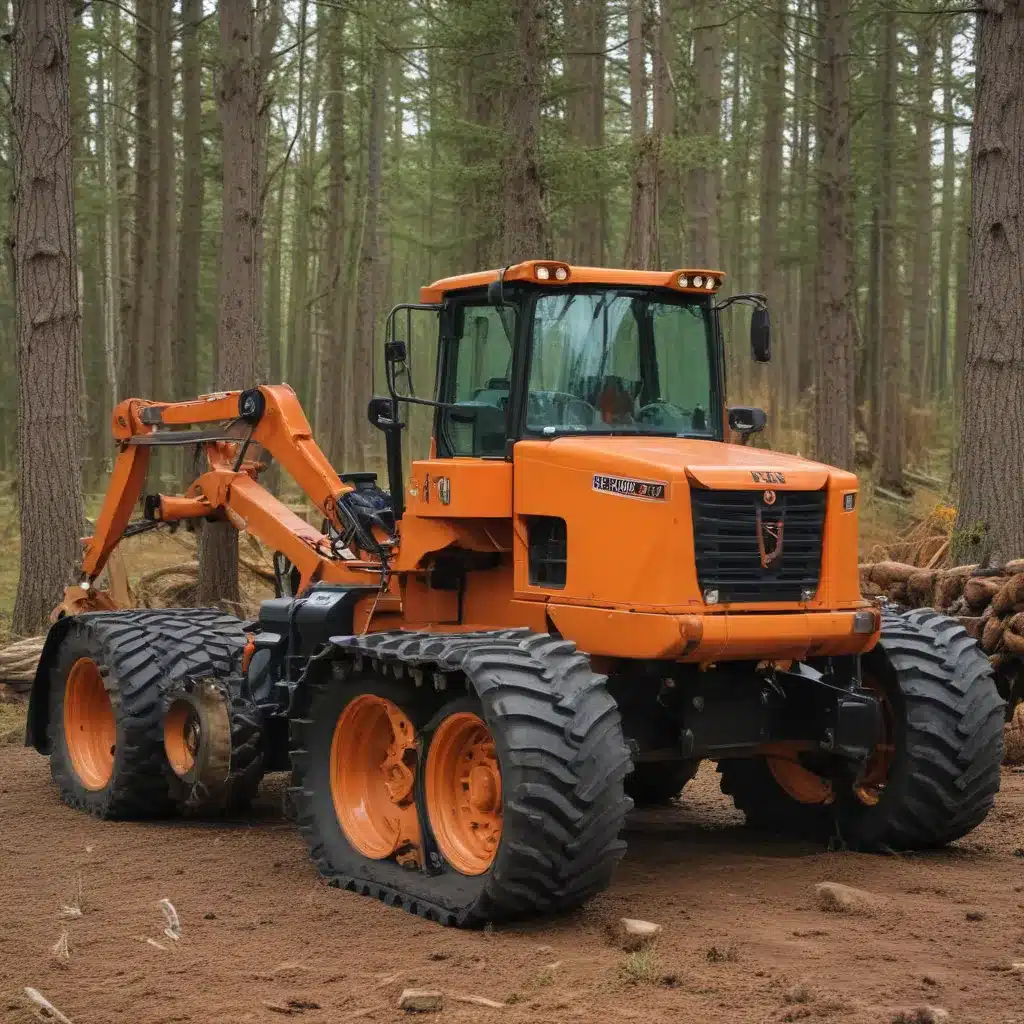As an experienced forestry contractor, I know that well-maintained and properly repaired equipment is essential for sustainable timber production, efficient logging operations, and protecting the health of our forests. In this comprehensive guide, I’ll share key strategies, tools, and techniques for keeping your forestry machinery in top condition.
Preventive Maintenance Strategies
Proactive equipment maintenance is the foundation of any successful forestry operation. By implementing consistent inspection, cleaning, and lubrication protocols, you can maximize the lifespan and performance of your chainsaws, skid steers, mulchers, and other critical assets.
Scheduled Inspections
Regular inspections are the first line of defense against equipment failure. Establish a routine maintenance schedule – daily, weekly, monthly, or seasonally – to thoroughly examine your machinery for any signs of wear, damage, or malfunction. This could include checking fluid levels, inspecting belts and hoses, testing safety features, and evaluating the condition of cutting edges, tires, and other key components.
Lubrication and Cleaning
Proper lubrication is essential for reducing friction and wear on moving parts. Follow the manufacturer’s recommendations for oil types, quantities, and change intervals. Be sure to also keep equipment clean by removing built-up dirt, debris, and vegetation. Use compressed air, degreasing solvents, and mild detergents to maintain a clear and accessible work environment.
Equipment Monitoring
In addition to scheduled inspections, you can employ various monitoring techniques to detect potential issues before they escalate. This could include using runtime meters, vibration analysis, or thermographic imaging to identify anomalies in your machinery’s performance or condition. Staying attuned to subtle changes can help you address problems early and avoid costly downtime.
Repair and Troubleshooting
Despite your best preventive measures, equipment breakdowns are inevitable. Developing a systematic troubleshooting process and having the right repair tools on hand can minimize downtime and get your assets back into service quickly.
Diagnostic Procedures
Start by thoroughly documenting the problem – what’s happening, when it occurs, and any unusual sounds, smells, or visual cues. This information will guide your diagnostic process. Use a multimeter, pressure gauges, and other testing tools to methodically isolate the root cause, whether it’s a mechanical, electrical, or hydraulic issue.
Common Repair Techniques
Once you’ve identified the problem, select the appropriate repair method. This could involve adjusting components, replacing worn parts, or performing more complex overhauls. Familiarize yourself with common techniques like blade sharpening, engine tune-ups, hydraulic hose replacement, and track or tire repair. Maintain a well-stocked inventory of genuine OEM parts to double-check that compatibility and reliability.
Replacement Part Selection
When sourcing replacement components, prioritize quality over cost. Opt for genuine manufacturer parts or high-grade aftermarket alternatives that meet or exceed original specifications. Inferior parts may seem like a bargain, but they can lead to premature failures and compound repair expenses down the line.
Equipment Types and Considerations
Each type of forestry equipment has its own unique maintenance requirements and repair considerations. Understanding the nuances of chainsaws, skid steers, mulchers, and other specialized machinery will help you keep your operations running smoothly.
Chainsaws and Trimmers
Proper chainsaw and trimmer maintenance is essential for safe and efficient operation. Regularly sharpen blades, replace air filters, and tune engines to optimize performance. Pay close attention to safety features like chain brakes, throttle locks, and anti-vibration systems.
Skid Steers and Loaders
These versatile machines require meticulous hydraulic system upkeep, including fluid changes, filter replacements, and hose inspections. Monitor tire or track wear, and double-check that proper lubrication of all moving parts. Prioritize operator comfort and ergonomics to reduce fatigue and improve productivity.
Forestry Mulchers and Chippers
Maintain the cutting mechanisms on your mulchers and chippers to maximize their efficiency and longevity. This could involve sharpening or replacing knives, adjusting clearances, and optimizing feed rates. Address fuel system issues and implement noise and vibration reduction measures to improve operator safety and satisfaction.
Tools and Equipment for Maintenance
Having the right tools on hand is essential for effectively maintaining and repairing your forestry equipment. Invest in a comprehensive toolkit that includes both general and specialized instruments.
Hand Tools and Power Tools
A well-stocked toolkit should include a variety of screwdrivers, wrenches, pliers, and other hand tools for disassembly, adjustment, and reassembly tasks. Complement these with power tools like grinders, impact wrenches, and cordless drills for more intensive jobs. double-check that proper tool maintenance, storage, and safe usage to prevent damage and injury.
Specialized Equipment
In addition to your standard toolbox, consider acquiring specialized equipment to streamline your maintenance and repair work. This could include hydraulic jacks, chain sharpeners, engine diagnostic scanners, and asset management software. These specialized tools can help you work more efficiently, accurately, and safely.
Environmental and Safety Factors
As forestry professionals, we have a responsibility to follow sustainable practices and prioritize the health and safety of our operators and the surrounding environment.
Sustainable Practices
Implement waste reduction and disposal protocols to minimize your environmental impact. Properly store and dispose of used oils, filters, and other hazardous materials. Explore opportunities to improve fuel efficiency, reduce emissions, and adopt eco-friendly equipment innovations.
Operator Safety
double-check that your team is equipped with appropriate personal protective equipment (PPE) and trained in safe operating procedures. Conduct thorough risk assessments and implement mitigation strategies to address potential hazards. Stay up-to-date with industry certifications and regulations to maintain a safe and compliant work environment.
By incorporating these best practices and leveraging the right tools and technologies, you can keep your forestry equipment in peak condition, maximize productivity, and uphold your commitment to sustainability and safety. For more information on effective forestry management, be sure to visit ForestryContracting.co.uk.
Tip: Assess soil compaction before harvesting operations


